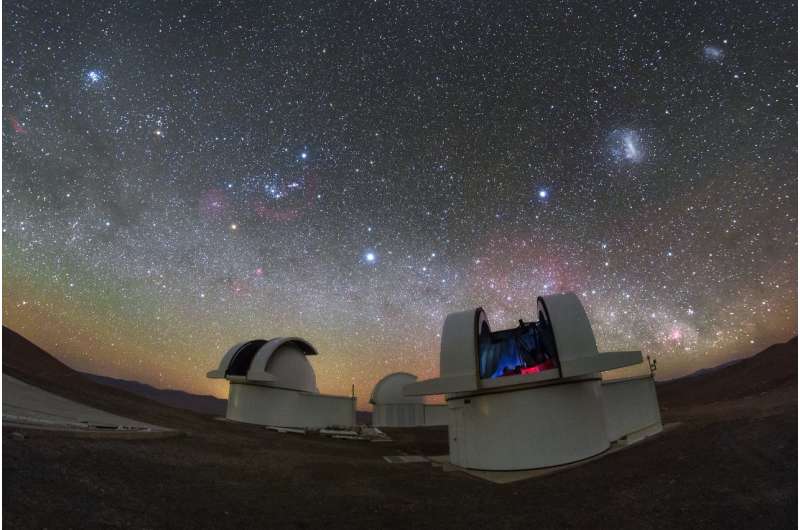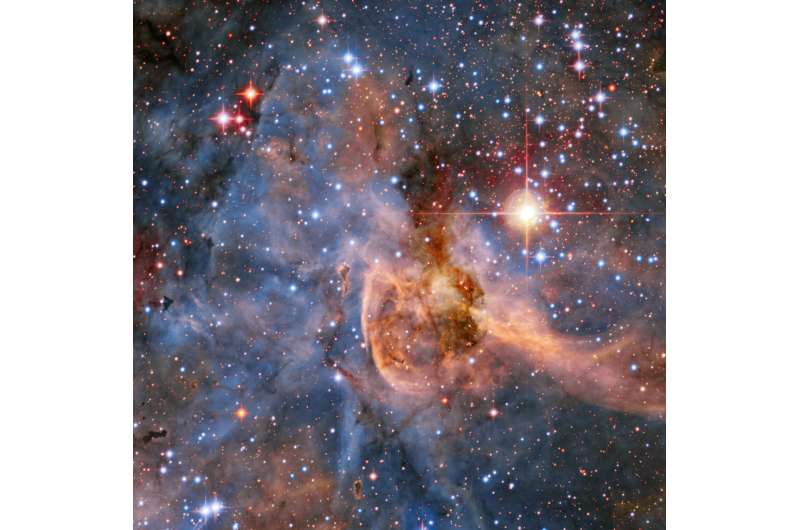First light for SPECULOOS

The SPECULOOS Southern Observatory (SSO) has been successfully installed at the Paranal Observatory and has obtained its first engineering and calibration images—a process known as first light. After finishing this commissioning phase, this new array of planet-hunting telescopes will begin scientific operations, starting in earnest in January 2019.
SSO is the core facility of a new exoplanet-hunting project called Search for habitable Planets EClipsing ULtra-cOOl Stars (SPECULOOS), and consists of four telescopes equipped with 1-metre primary mirrors. The telescopes—named Io (moon), Europa (moon), Ganymede (moon) and Callisto (moon) after the four Galilean moons of Jupiter—will enjoy pristine observing conditions at the Paranal site, which is also home to ESO's flagship brown dwarfs, whose planetary populations are still mostly unexplored. Only a few exoplanets have been found orbiting such stars, and even fewer lie within their parent star's habitable zone . Even though these dim stars are hard to observe, they are abundant—comprising about 15% of the stars in the nearby universe. SPECULOOS is designed to explore 1000 such stars, including the nearest, brightest, and smallest, in search of Earth-sized habitable planets.
"SPECULOOS gives us an unprecedented ability to detect terrestrial planets eclipsing some of our smallest and coolest neighbouring stars," elaborated Michaël Gillon of the University of Liège, principal investigator of the SPECULOOS project. "This is a unique opportunity to uncover the details of these nearby worlds."
SPECULOOS will search for exoplanets using the transit method, following the example of its prototype TRAPPIST-1 planetary system. As a planet passes in front of its star it blocks some of the star's light—essentially causing a small partial eclipse—resulting in a subtle but detectable dimming of the star. Exoplanets with smaller host stars block more of their star's light during a transit, making these periodic eclipses much easier to detect than those associated with larger stars.

Thus far, only a small fraction of the exoplanets detected by this method have been Earth-sized or smaller. However, the small size of the SPECULOOS target stars combined with the high sensitivity of its telescopes allows detection of Earth-sized transiting planets located in the habitable zone. These planets will be ideally suited for follow-up observations with large ground- or space-based facilities.
"The telescopes are kitted out with cameras that are highly sensitive in the near-infrared," explained Laetitia Delrez of the Cavendish Laboratory, Cambridge, a co-investigator in the SPECULOOS team. "This radiation is a little beyond what human eyes can detect, and is the primary emission from the dim stars SPECULOOS will be targeting."
The telescopes and their brightly coloured mounts were built by the German company ASTELCO and are protected by domes made by the Italian manufacturer Gambato. The project will receive support from the two TRAPPIST 60-cm telescopes, one at ESO's La Silla Observatory and the other in Morocco. The project will in due course also include the SPECULOOS Northern Observatory and SAINT-Ex, which are currently under construction in Tenerife, Spain, and at San Pedro Mártir, Mexico, respectively.
There is also potential for an exciting future collaboration with the Extremely Large Telescope, ESO's future flagship telescope, currently under construction on Cerro Armazones. The ELT will be able to observe planets detected by SPECULOOS in unprecedented detail—perhaps even analysing their atmospheres.
"These new telescopes will allow us to investigate nearby Earth-like worlds in the Universe in greater detail than we could have imagined only ten years ago," concluded Gillon. "These are tremendously exciting times for exoplanet science."
Provided by ESO





















